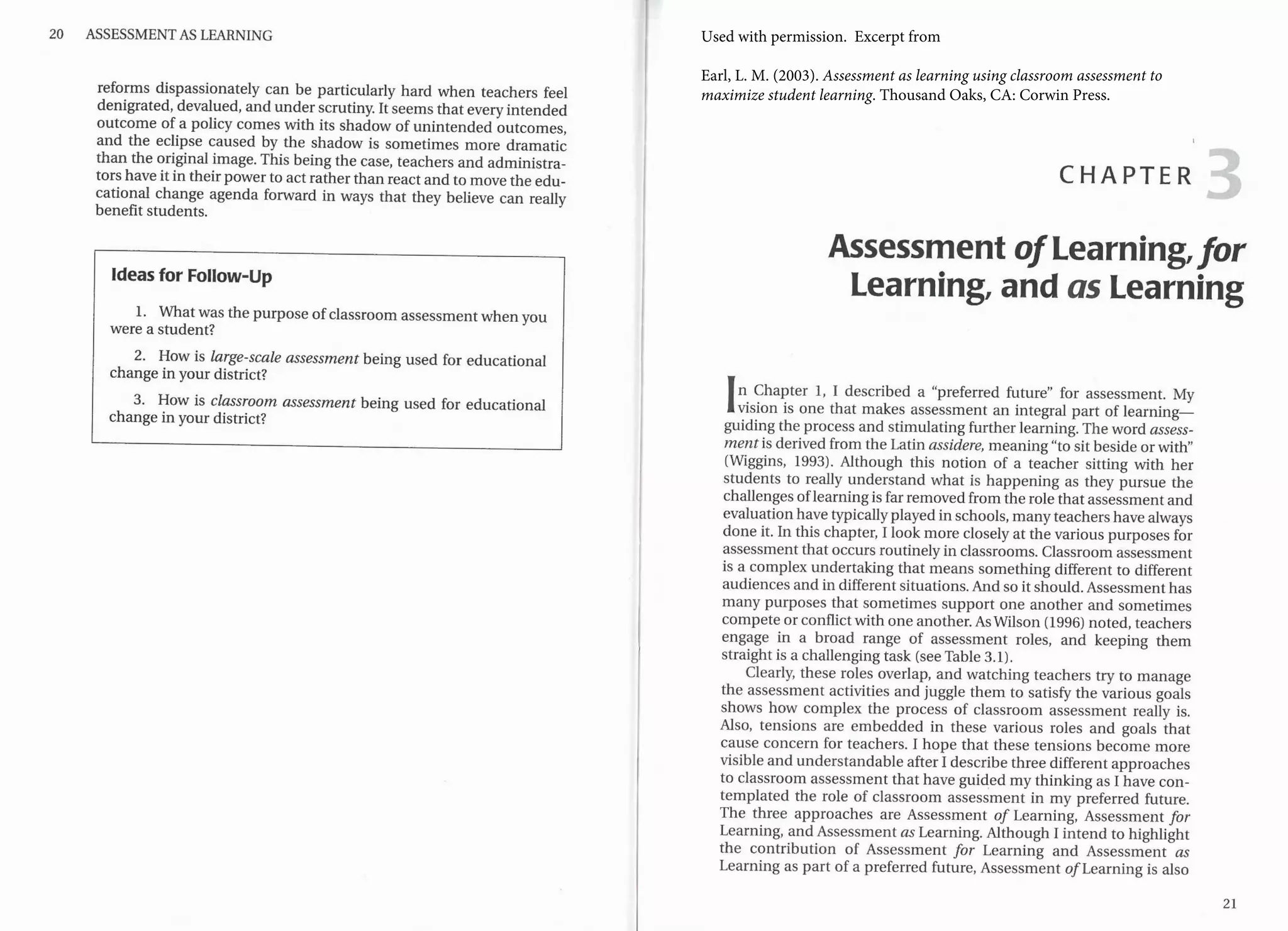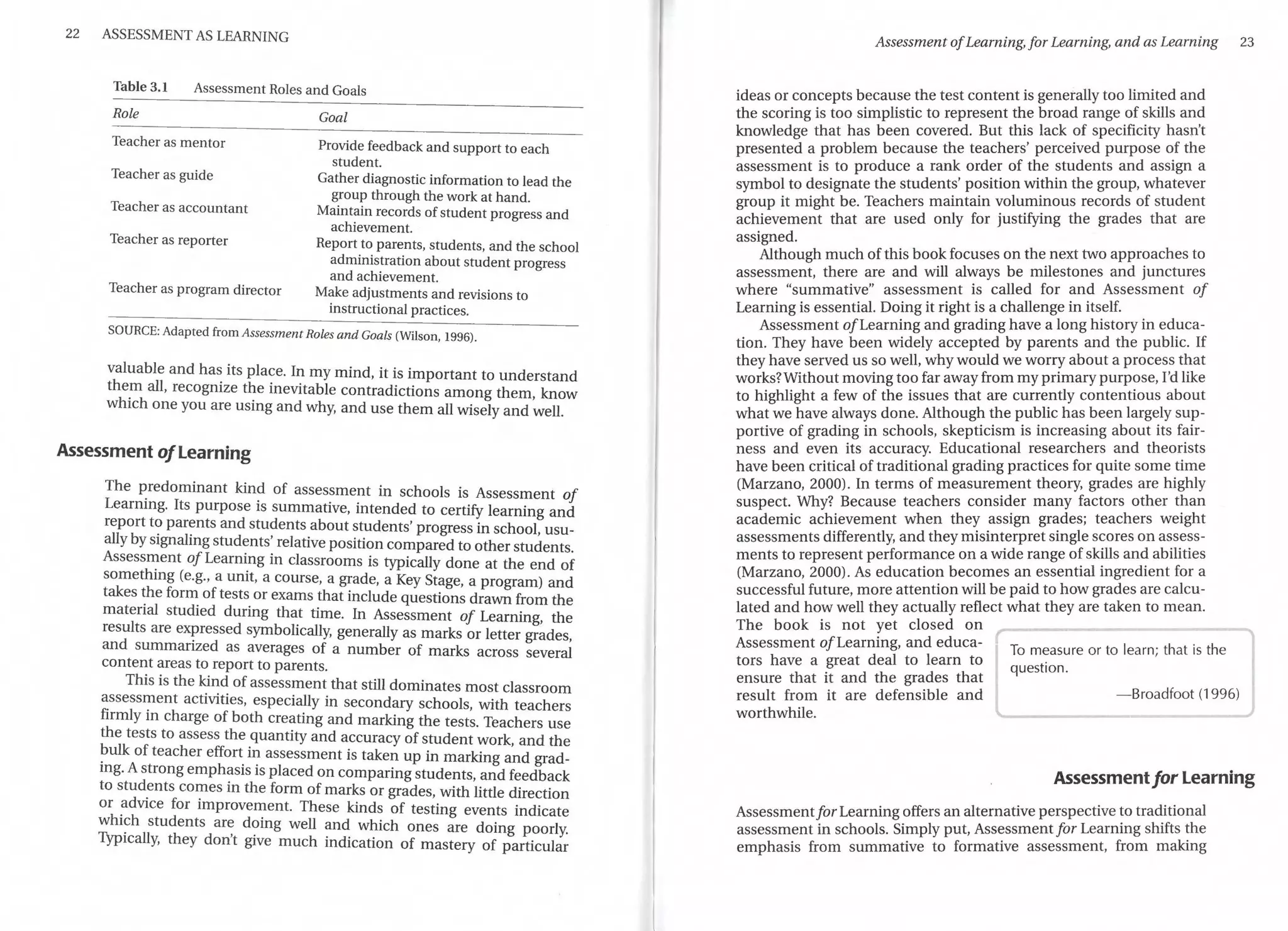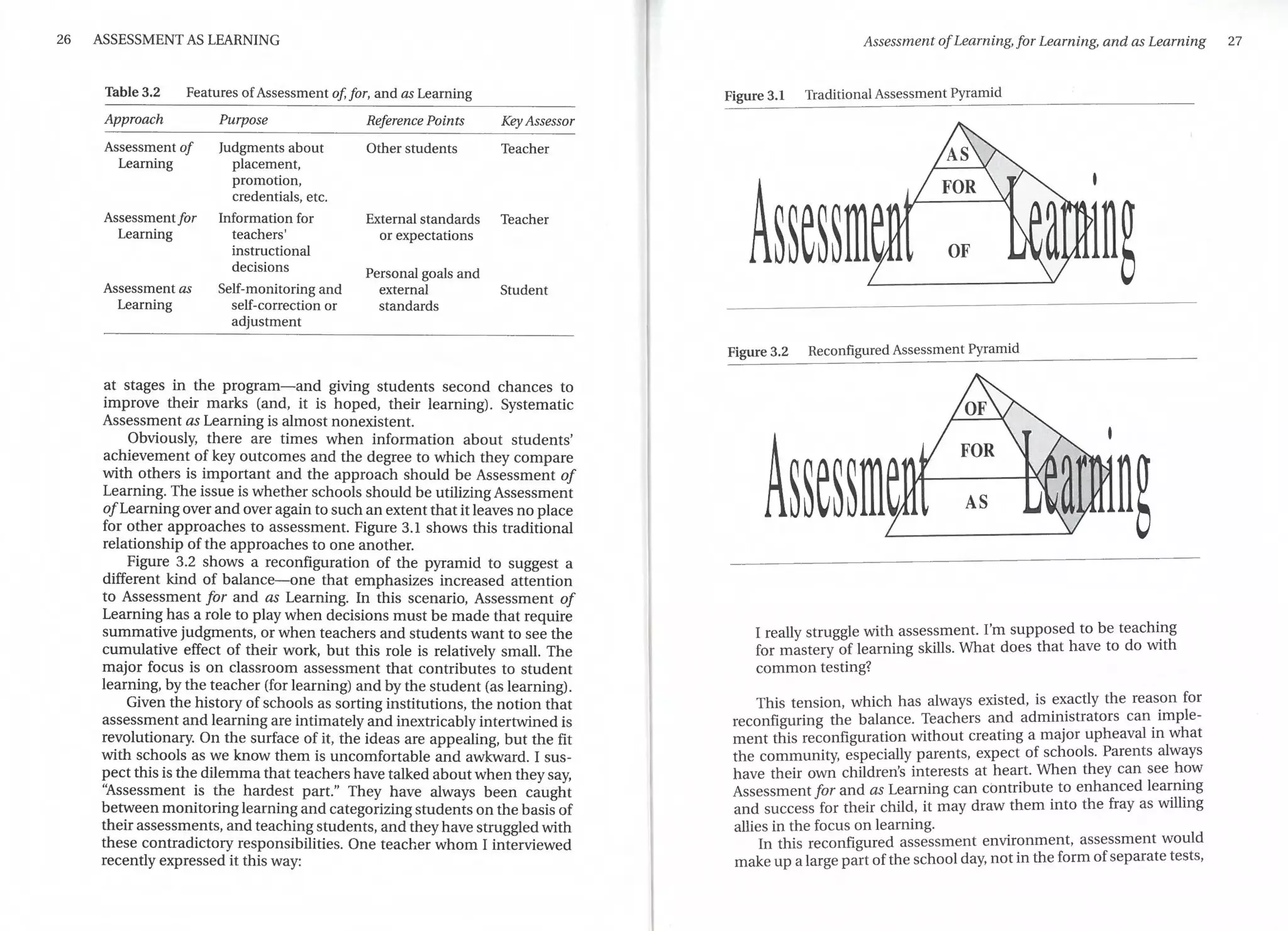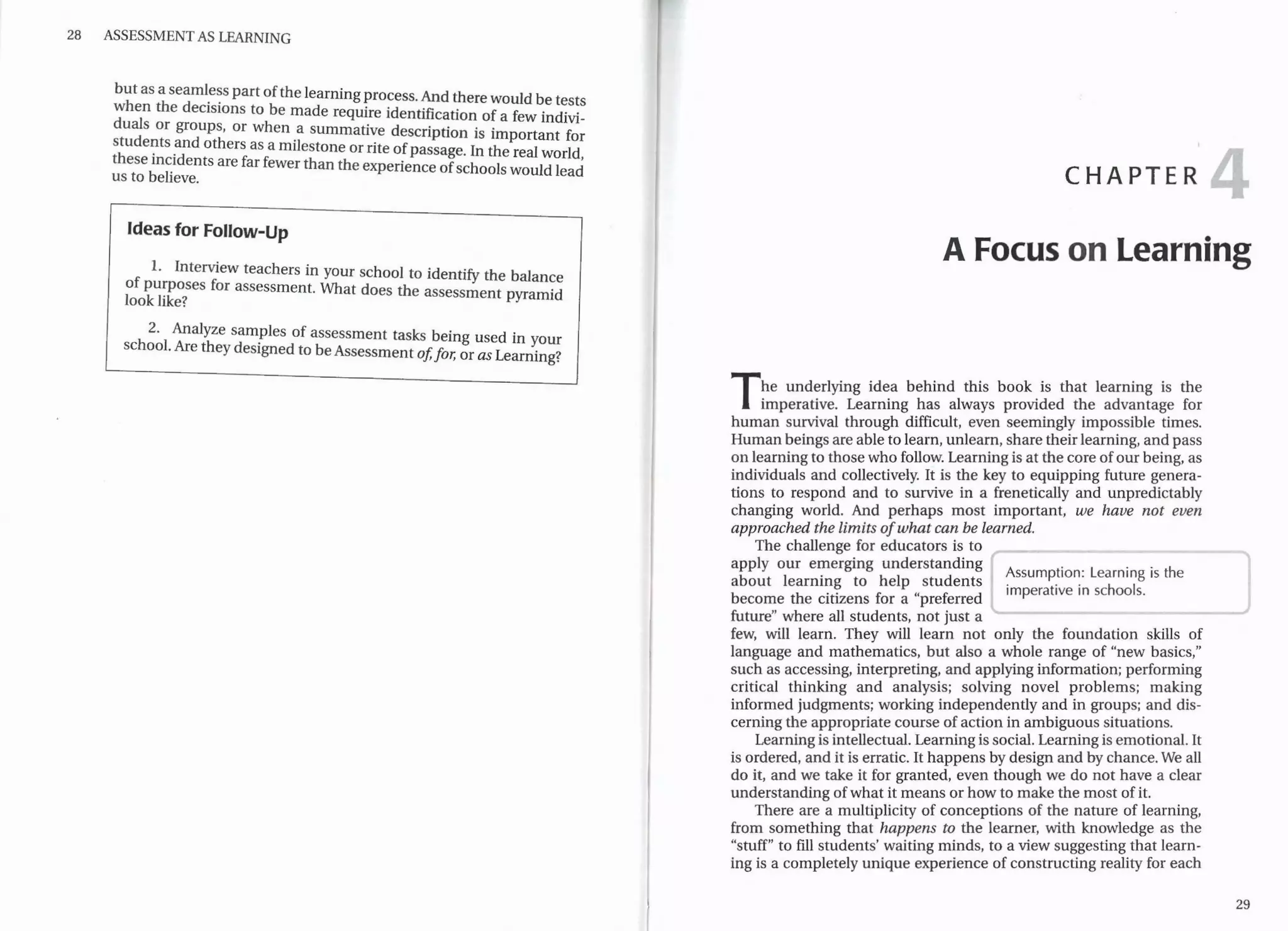This document discusses three approaches to classroom assessment: Assessment of Learning, Assessment for Learning, and Assessment as Learning.
1) Assessment of Learning focuses on summative assessment to measure and compare student learning at the end of a period. It emphasizes grades and ranks students but provides little feedback.
2) Assessment for Learning takes a formative approach to gather ongoing diagnostic information to guide instruction and next steps. Teachers collect diverse data to understand students and adapt teaching.
3) Assessment as Learning positions assessment as integral to the learning process, stimulating further learning. It focuses on descriptive feedback rather than judgments to enhance student learning.




